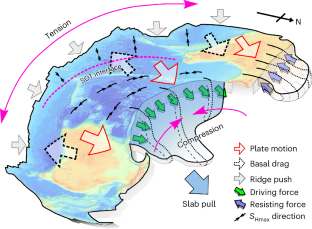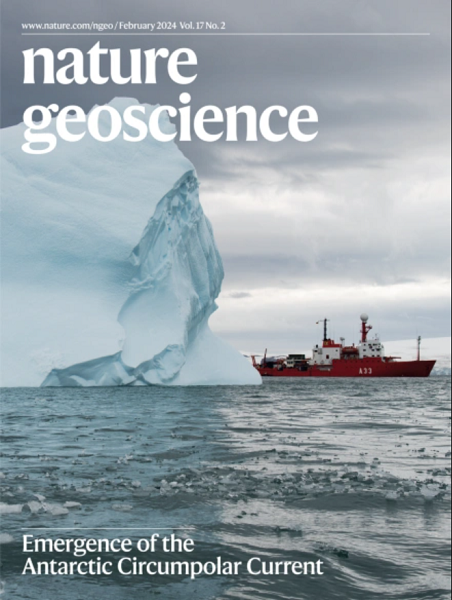一个高分辨率的全球模型确定了印度-亚洲碰撞的主要驱动力
IF 16.1
1区 地球科学
Q1 GEOSCIENCES, MULTIDISCIPLINARY
引用次数: 0
摘要
板块运动和板块内应力结合高分辨率、板块边界解析的全球对流模型,使整体评估板块驱动力成为可能,并揭示了苏门答腊-爪哇板块拉拔是印度-欧亚大陆碰撞的主要驱动力。本文章由计算机程序翻译,如有差异,请以英文原文为准。


A high-resolution global model nails down the primary driving force of the India–Asia collision
The combination of plate motion and intraplate stress with a high-resolution, plate-boundary-resolving, global convection model has made it possible to holistically evaluate plate driving forces and reveal that Sumatra–Java slab pull is the predominant driver of the India–Eurasia collision. This suggests the growth of the Tibetan Plateau required external forces from adjacent subduction zones.
求助全文
通过发布文献求助,成功后即可免费获取论文全文。
去求助
来源期刊

Nature Geoscience
地学-地球科学综合
CiteScore
26.70
自引率
1.60%
发文量
187
审稿时长
3.3 months
期刊介绍:
Nature Geoscience is a monthly interdisciplinary journal that gathers top-tier research spanning Earth Sciences and related fields.
The journal covers all geoscience disciplines, including fieldwork, modeling, and theoretical studies.
Topics include atmospheric science, biogeochemistry, climate science, geobiology, geochemistry, geoinformatics, remote sensing, geology, geomagnetism, paleomagnetism, geomorphology, geophysics, glaciology, hydrology, limnology, mineralogy, oceanography, paleontology, paleoclimatology, paleoceanography, petrology, planetary science, seismology, space physics, tectonics, and volcanology.
Nature Geoscience upholds its commitment to publishing significant, high-quality Earth Sciences research through fair, rapid, and rigorous peer review, overseen by a team of full-time professional editors.
 求助内容:
求助内容: 应助结果提醒方式:
应助结果提醒方式:


